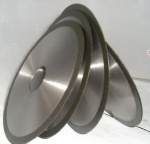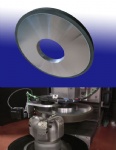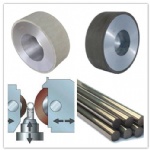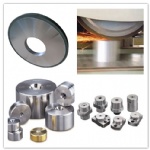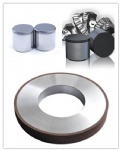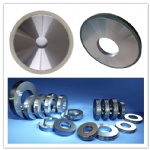The grit concentration refers to the quantity of abrasive particles per unit volume of the abrasive layer. Normally it is expressed on a scale from C25 to C200. Diamond and CBN grain weights are usually measured in carats (CTS.). Thus, a C25 concentration means total 1,1ct abrasives per cm3 of coating volume. For a concentration C200 the weight per cm3 of coating volume corresponds to 8,8cts. A high concentration of abrasive particles makes the tool wear-resistant, which is particularly ideal for profile grinding operations in applications involving very small diameters. Normally, the advantages coming from the long tool-life – thanks to the high concentration of grains – largely compensate for its extra cost (due to greater diamond or CBN grit volumes).
Potential drawbacks of higher grit concentration lie in the need for higher grinding forces and higher process temperatures. It means a higher concentration not always takes longer life. Therefore, the higher concentration does not necessarily represent the best solution in terms of economic and technological efficiency.
Generally we use the following reference to make decisions.
|
Concentration
|
Description
|
Reccomended Applicaiton
|
|
C125
|
High Concentration
|
Profile or creep feed grinding, cutting. Small area of contact up to 4mm.
|
|
C100
|
High Concentration
|
Profile or creep feed grinding, cutting. Small area of contact up to 6mm.
|
|
Tool face grinding for increased life of wheel. Wet grinding.
|
|
C75
|
Medium Concentration
|
Surface, cylindrical or tool grinding, saw & knife sharpening.
|
|
C25-50
|
Low Concentration
|
Fine & polish grinding. Large area of contact. Higher than recommended peripheral speed.
|



